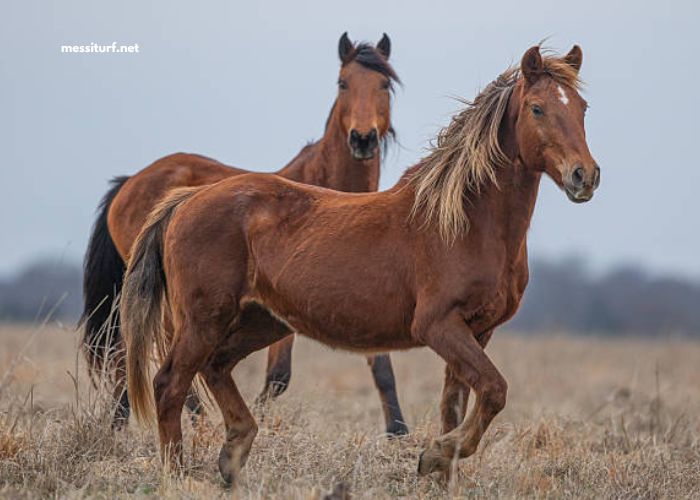A beautiful, lush lawn is the pride of any homeowner. When it comes to choosing the right type of grass for your lawn, Buffalo turf stands out as an excellent choice. Known for its rich green color, durability, and low maintenance requirements, Buffalo turf has become a popular option for creating stunning outdoor landscapes. In this comprehensive guide, we’ll delve into the world of Buffalo turf, exploring its characteristics, benefits, and tips for successful maintenance.
The Beauty of Buffalo Turf: Characteristics and Types
Buffalo turf, scientifically known as Stenotaphrum secundatum, is a warm-season grass variety native to regions with tropical and subtropical climates. Its popularity stems from its unique characteristics that make it an ideal choice for lawns in various environments. Buffalo grass is prized for its lush, deep green color and its ability to create a dense and carpet-like appearance.
There are several different varieties of Buffalo turf available, each with its own set of characteristics. Some of the most popular types include:
- Palmetto Buffalo: This variety is known for its shade tolerance, making it an excellent choice for lawns with areas of limited sunlight. Palmetto Buffalo turf also has good wear resistance and disease tolerance, making it suitable for high-traffic areas.
- Sir Walter Buffalo: One of the most well-known Buffalo grass varieties, Sir Walter is renowned for its adaptability to a wide range of climates. It has a soft texture and exceptional drought resistance, making it a top choice for both residential and commercial landscapes.
- Sapphire Buffalo:With a fine texture and vibrant green color, Sapphire Buffalo turf is prized for its aesthetics. It maintains its color well into the cooler months and exhibits good disease resistance.
Benefits of Choosing Buffalo Turf
- Low Maintenance: Buffalo turf is known for its relatively low maintenance requirements. It has a slow growth rate, meaning less frequent mowing is necessary. Additionally, its dense growth pattern naturally suppresses weed growth, reducing the need for herbicides.
- Drought Tolerance: Buffalo grass is well-adapted to dry conditions and can withstand periods of drought. Its deep root system allows it to access water from deeper soil layers, making it a water-efficient choice for eco-conscious homeowners.
- Shade Tolerance: Many Buffalo turf varieties exhibit impressive shade tolerance. This means they can thrive in areas with partial sunlight, making them suitable for yards with trees or buildings that cast shadows.
- Soft Texture: The fine leaves of Buffalo grass create a soft and comfortable texture underfoot, making it a pleasant surface for outdoor activities and relaxation.
- Durability: Buffalo turf is renowned for its durability and ability to recover from wear and tear. It can withstand heavy foot traffic, making it an excellent choice for active families and pets.
Planting and Establishment
Proper planting and establishment are crucial for the success of your Buffalo turf lawn. Here’s a step-by-step guide to ensure a healthy and vibrant lawn:
- Soil Preparation: Start by preparing the soil. Buffalo grass prefers well-draining soil with a slightly acidic to neutral pH. Conduct a soil test to determine if any amendments are needed.
- Site Clearing: Clear the planting area of any debris, rocks, or old vegetation. Ensure the area receives adequate sunlight based on the specific Buffalo grass variety you choose.
- Laying the Turf: Purchase high-quality Buffalo turf rolls from a reputable supplier. Lay the rolls in a staggered pattern to prevent visible seams. Press down on the turf to eliminate air pockets and ensure good soil contact.
- Watering: Water the newly laid turf thoroughly to encourage root establishment. Keep the soil consistently moist for the first few weeks to aid in rooting.
- Mowing and Maintenance: Once the turf is well-established (usually within 6-8 weeks), start mowing at the recommended height for your chosen Buffalo grass variety. Follow a regular mowing schedule to maintain an even and neat appearance.
Maintaining a Healthy Buffalo Turf
- **Watering:** While Buffalo grass is drought-tolerant, it’s important to provide sufficient water during periods of dryness. Water deeply and infrequently to encourage deep root growth.
- Mowing: Maintain a consistent mowing schedule, ensuring you never remove more than one-third of the grass height in a single mowing session. This prevents stress on the turf and promotes healthy growth.
- Fertilization: Buffalo grass benefits from regular fertilization to maintain its color and vigor. Use a balanced fertilizer according to the manufacturer’s instructions.
- Weed Control: Proper lawn care practices, such as appropriate watering and mowing, can help prevent weed growth. However, if weeds do appear, use targeted treatments to avoid damaging the Buffalo grass.
- Aeration: Periodic aeration helps alleviate soil compaction and allows air, water, and nutrients to reach the grassroots. Consider aerating your Buffalo turf every 1-2 years.
Common Challenges and Solutions
While Buffalo turf is relatively low-maintenance, it can face certain challenges. Here are some common issues and their solutions:
- Disease: Buffalo grass is generally disease-resistant, but it can still fall victim to fungal diseases. Ensure proper airflow, avoid overwatering, and treat diseases promptly with appropriate fungicides.
- Insects: Insect infestations can damage your Buffalo turf. Identify the pests and use targeted insecticides or natural solutions to address the issue.
- Thatch Buildup: Thatch is a layer of dead grass and organic matter that accumulates on the soil surface. Occasional dethatching can prevent water and nutrient blockages.
Conclusion
Buffalo turf is a versatile and aesthetically pleasing option for homeowners seeking a lush and sustainable lawn. With its low maintenance requirements, drought tolerance, shade adaptability, and soft texture, it’s no wonder Buffalo grass has gained popularity in various climates. By understanding the characteristics of different Buffalo grass varieties and following proper planting and maintenance techniques, you can enjoy a vibrant and enduring lawn that enhances the beauty of your outdoor space for years to come.




